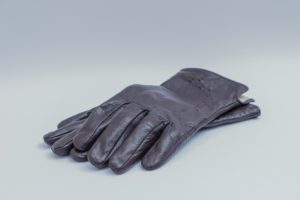The Story of Fingerprints
Fingerprints are arguably the most unique part of the human body. Identical twins don’t even share the same fingerprints, and that individuality makes fingerprints an important piece of physical evidence in crime-solving. While the uniqueness of prints is common knowledge today, it took a long time for the justice system to begin taking advantage of them.
Early studies
Humans have known fingerprints that can be used to identify people for a long time. In a 14th-century book from Persia, the writer makes remarks about how people were identified from their prints. In the 1600s, doctors began to examine prints more closely. Dr. Nehemiah Grew wrote a book on friction ridges (the fancy name for fingerprints) in 1684, becoming the first European to do so. Two years later, an anatomy professor studied the loops, spirals, and ridges on prints, and ended up getting a layer of skin named (the Malpighian) after him.
Despite this research, it wasn’t until the mid-1800s that law enforcement started thinking about fingerprints. Before, officers with photographic memories had been responsible for identifying suspects, and then real photography replaced them. However, people change as they age. In 1870, an anthropologist created a system using parts of the body that didn’t change with time. It was named the Bertillon System, after the creator, and was used for three decades.
However, one case, in particular, demonstrated the system’s flaws. In 1903, “Will West” was arrested and sentenced to jail in Kansas based on his measurements. The problem? There was already a “William West” in that prison with Bertillon measurements almost exactly the same. They also looked eerily similar. When their fingerprints were compared, they were finally identified as unique individuals – one who had committed murder, and one guilty of a minor crime.
The Story of Fingerprints: Smart criminals wear gloves to prevent leaving fingerprints
The science of fingerprinting
The science of fingerprint identification stands out among all other forensic disciplines for a variety of reasons, including the fact that it has provided accurate identification of people for over a century to governments all over the world. In many trillions of comparisons made by both automated computers and human beings, no two fingerprints have ever been identical. The mainstay of criminal history verification at police agencies around the world is fingerprinting.
The International Association for Identification (IAI), the first forensic science professional organization, was founded in 1915.
ALAFFIA: Whipped Shea Butter and Coconut Oil Wild Lavender, 4 oz
In 1977, the IAI’s Certified Latent Print Examiner (CLPE) program was established, becoming the first professional certification program for forensic scientists. The forensic fingerprint discipline has never asserted the infallibility of latent print examiners. The IAI’s certification program has been awarding certification for more than 40 years to people who meet strict requirements and revoking certification for faults (quality assurance issues) such incorrect identifications.
Many thousands of new people being added daily to fingerprint repositories around the world. Fingerprinting is becoming more and more popular as the main way for correctly identifying people in government data systems.
Is comparatively cheap for catching criminals. Governments must balance forensic and investigative resources to best achieve timeliness and thoroughness requirements without losing accuracy, which puts a premium on cost. For instance, DNA is just as prevalent as fingerprints at many crime scenes. Its examination can cost up to four hundred times as much as that of a fingerprint and take months longer to complete. Therefore, fingerprints are frequently the primary evidence obtained and quickly processed at less serious crime scenes, such as those of burglaries or vehicle break-ins, although both fingerprints and DNA are typically taken from serious crimes, such as sexual assault and murder.
Police start using prints
If the officers, in that case, had been aware of Francis Galton’s work, they wouldn’t have had this problem. In 1882, Francis Galton gathered 8,000 fingerprints and developed a classification system. In 1896, the commissioner of the Metropolitan Police of London based his own system on Galton’s, and the Henry Classification System was born. It was adopted across Britain and in 1902, Scotland Yard presented fingerprints as evidence for the first time in court. By 1903, New York prisons were using the method.
Crime stories serve as a timeline of the use of fingerprints. In a 1903 story, Sherlock Holmes discovers a bloody fingerprint and identifies a criminal. The Red Thumb-Mark, a 1907 novel by R. Austin Freeman, centers around a print left on a piece of paper. Today, it’s standard to see TV detectives dusting and using chemicals or light to reveal oily marks.
There are actually three types of prints a person can leave: plastic, patent, and latent. Plastic fingerprints are the rarest, as a criminal would have to leave a print in putty, melted candle wax, or another substance that serves as a 3D mold. Patent ones are made with dirt, grease, ink, or blood. Latent prints are invisible to the naked eye and require dusting or other methods to be revealed. They are often incomplete and not always 100% accurate at pinpointing a suspect.
The Story of Fingerprints: Fingerprints could increase online security
The future of fingerprints
Using fingerprints as ID is still common, and is expanding into the digital world. Hackers are finding new and creative ways to unlock traditional passwords. Companies like Apple integrate technology that lets users open their phones with their fingerprints. Prints are also used for voting in many countries, while scientists explore what they can learn about individuals from their prints. As the world changes around us, that physical feature doesn’t. It may be the most reliably unique feature of every human.






